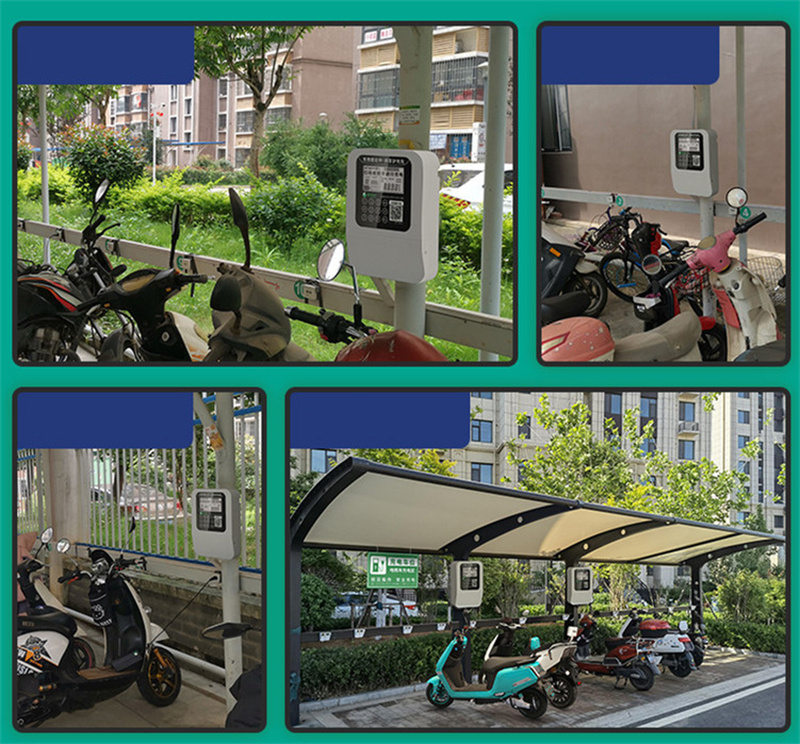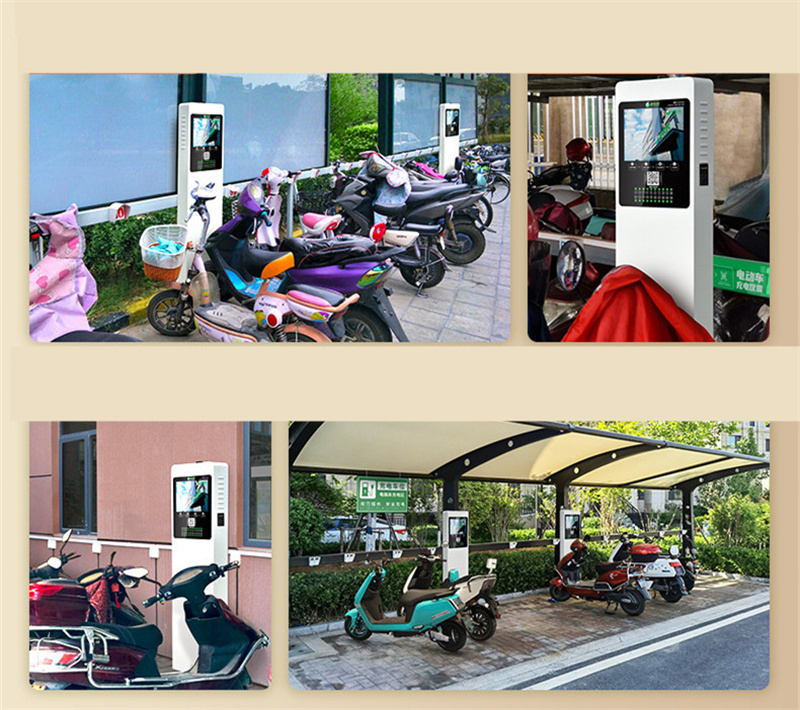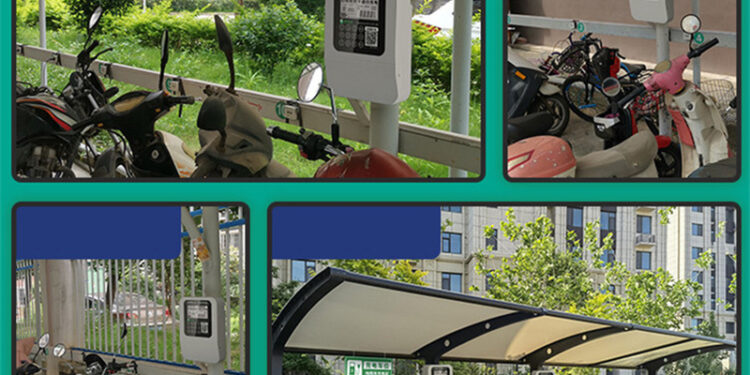Exploring the world of electric motorbike charging stations near me, this introduction aims to provide a detailed and insightful look into the importance, types, locations, costs, and maintenance of these essential facilities.
From the growing demand for electric motorbikes to the advancements in charging station technology, this guide covers all you need to know about navigating the electric motorbike charging landscape.
Research on Electric Motorbike Charging Stations

Electric motorbike charging stations play a crucial role in supporting the growing shift towards electric transportation in our communities. As more people opt for electric motorbikes over traditional gas-powered vehicles, the need for accessible and efficient charging infrastructure becomes increasingly important.
Importance of Electric Motorbike Charging Stations
Electric motorbike charging stations provide a convenient and reliable way for riders to recharge their bikes, ensuring they can travel longer distances without worrying about running out of battery. They also help reduce range anxiety, making electric motorbikes a more viable option for daily commuting and longer trips.
- Statistics show a significant increase in the demand for electric motorbikes worldwide, with sales expected to continue rising in the coming years. This surge in popularity underscores the need for more charging stations to support the growing number of electric motorbike users.
- By promoting the use of electric motorbikes, charging stations contribute to reducing greenhouse gas emissions and air pollution, leading to a cleaner and healthier environment. Electric motorbikes produce zero tailpipe emissions, making them a sustainable alternative to gas-powered vehicles.
- The availability of charging stations encourages more people to make the switch to electric transportation, ultimately contributing to a greener and more sustainable future for our communities.
Types of Electric Motorbike Charging Stations
Electric motorbike charging stations come in different types to cater to the needs of electric motorbike owners. These stations vary in terms of charging speeds and compatibility with electric motorbikes.
Standard Electric Outlets vs. Specialized Charging Stations
Standard electric outlets are commonly found in homes and public places, providing a convenient option for charging electric motorbikes. However, specialized charging stations designed specifically for electric vehicles offer faster charging speeds and additional features such as payment options and real-time monitoring.
Charging Speeds at Different Stations
- Standard Electric Outlets: These outlets typically provide slower charging speeds compared to specialized charging stations. It may take several hours to fully charge an electric motorbike using a standard outlet.
- Specialized Charging Stations: These stations offer different levels of charging speeds, categorized as Level 1, Level 2, and DC Fast Charging. Level 1 charging is the slowest, Level 2 is faster, and DC Fast Charging provides the quickest charging option for electric motorbikes.
Compatibility with Electric Motorbikes
- Standard Electric Outlets: Electric motorbikes can be charged using standard electric outlets, but the charging process may be slower and less efficient compared to specialized charging stations.
- Specialized Charging Stations: These stations are specifically designed to be compatible with electric motorbikes, ensuring optimal charging speeds and efficiency. Electric motorbikes equipped with the necessary connectors can easily access and benefit from these specialized charging stations.
Location and Access to Charging Stations
When it comes to finding electric motorbike charging stations near your specific location, there are a few ways to go about it. You can use various apps or websites dedicated to mapping out charging stations, or even check with your local government for information on available stations in your area.
Accessibility of Charging Stations
Electric motorbike charging stations are designed to be easily accessible for users. This includes factors such as convenient parking spaces near the charging station, user-friendly interfaces for ease of use, and safety measures in place to protect both the rider and the bike during the charging process.
- Convenient Parking: Charging stations are typically located in areas with ample parking space for motorbikes, making it easy for riders to park their vehicles while they charge.
- User-Friendly Interfaces: Charging stations often have simple and intuitive interfaces that allow riders to easily plug in their bikes and start the charging process without any hassle.
- Safety Measures: To ensure the safety of both the rider and the bike, charging stations are equipped with features like secure locking mechanisms and protection from weather elements.
Significance of Strategic Placement
The strategic placement of charging stations in urban areas plays a crucial role in promoting the adoption of electric motorbikes. By strategically placing these stations in high-traffic areas, riders are more likely to utilize them, leading to increased convenience and accessibility for electric motorbike users.
Charging Station Infrastructure and Technology
Electric motorbike charging stations are equipped with advanced technology to efficiently recharge electric vehicles. These stations play a crucial role in supporting the widespread adoption of electric motorcycles by providing a convenient and reliable charging solution. Let's delve into the infrastructure and technology that power these charging stations.
Components of a Typical Charging Station Setup
A typical electric motorbike charging station consists of several key components that work together to facilitate the charging process. These components include:
- Charging Unit: The main component responsible for delivering electricity to the electric motorbike's battery.
- Connectors and Cables: These enable the physical connection between the charging unit and the electric motorbike for energy transfer.
- Payment System: Allows users to pay for the charging service, either through a subscription, RFID card, or mobile payment.
- Display Screen: Provides users with important information such as charging status, duration, and cost.
- Networking System: Enables remote monitoring and management of the charging station, ensuring optimal performance and reliability.
Advancements in Charging Station Infrastructure
With the increasing demand for electric motorbikes, charging station infrastructure has evolved to meet the evolving needs of users. Some advancements include:
- Rapid Charging: The development of fast-charging technologies allows electric motorbikes to be recharged quickly, reducing waiting times for users.
- Smart Grid Integration: Charging stations are now integrated with smart grid systems, enabling better load management and energy distribution.
- Wireless Charging: Emerging wireless charging technology eliminates the need for physical cables, providing a convenient and hassle-free charging experience.
- Renewable Energy Integration: Many charging stations now incorporate renewable energy sources such as solar panels, reducing the environmental impact of charging electric motorbikes.
- Enhanced Connectivity: Charging stations now offer improved connectivity features, such as mobile apps for locating stations, checking availability, and monitoring charging progress.
Cost and Payment Options at Charging Stations
Electric motorbike charging stations offer various cost and payment options to cater to different user needs. Let's explore the details below.
Cost of Charging
- Charging an electric motorbike at a charging station usually incurs a cost per kilowatt-hour (kWh) of electricity consumed.
- The cost can vary depending on the location of the charging station, the electricity rates in that area, and any additional service fees.
- Some charging stations may offer tiered pricing based on the charging speed or time spent charging.
Payment Options
- Pay-Per-Use: Users can choose to pay for charging their electric motorbike on a per-use basis, typically using a credit card or mobile payment.
- Subscription-Based: Charging stations may offer subscription plans where users pay a monthly fee for access to discounted charging rates or other benefits.
- Free Charging: Some charging stations, especially those sponsored by companies or government entities, may offer free charging to promote electric vehicle adoption.
Incentives and Discounts
- Government incentives: In some regions, electric vehicle owners may qualify for government incentives or rebates for using charging stations, reducing the overall cost.
- Discounts for loyal customers: Charging networks or stations may offer discounts or rewards for frequent users to encourage loyalty and repeat business.
- Promotional offers: Charging stations may run promotional campaigns offering discounted or free charging for a limited time to attract more users.
Maintenance and Upkeep of Charging Stations

Maintaining and ensuring the proper functioning of electric motorbike charging stations is crucial for the smooth operation of these facilities. Regular maintenance procedures are essential to prevent breakdowns and ensure a seamless charging experience for users.
Regular Maintenance Procedures
- Regular inspection of all charging equipment to check for any signs of wear and tear.
- Cleaning of charging connectors and ports to ensure proper contact and efficient charging.
- Testing of charging station software and connectivity to address any technical issues promptly.
- Replacement of faulty components and parts to avoid disruptions in service.
Challenges in Upkeep and Solutions
- Weather-related damage: Extreme weather conditions can affect the charging station infrastructure. Installing weatherproof enclosures and conducting regular weather checks can help mitigate this challenge.
- Vandalism and theft: Security measures such as surveillance cameras and frequent site inspections can deter vandalism and theft at charging stations.
- Technical malfunctions: Implementing remote monitoring systems and having trained technicians on standby can help quickly address any technical issues that arise.
Role of Stakeholders
- Government authorities: Responsible for setting regulations and standards for charging station maintenance to ensure quality and safety.
- Charging station operators: Tasked with implementing maintenance schedules, conducting regular checks, and addressing any maintenance issues promptly.
- Electric vehicle manufacturers: Collaborating with charging station operators to ensure compatibility and optimal performance of charging equipment.
Outcome Summary

In conclusion, electric motorbike charging stations near me play a crucial role in promoting sustainability, accessibility, and convenience for electric vehicle users. By understanding the key aspects of these stations, individuals can make informed decisions about their electric motorbike charging needs.
Commonly Asked Questions
How can I find electric motorbike charging stations near my location?
You can use online maps, charging station locator apps, or contact local electric vehicle organizations for information on nearby charging stations.
What are the different payment options available at electric motorbike charging stations?
Payment options can vary from pay-per-use models, subscription-based plans, or even free charging offered by some stations funded by sponsors or local governments.
What maintenance procedures are needed for optimal functioning of charging stations?
Regular checks on electrical connections, charging cables, and software updates are essential to ensure the smooth operation of charging stations.
Are there any incentives for using specific electric motorbike charging stations?
Some stations offer discounts, rewards, or loyalty programs for frequent users to encourage sustainable transportation practices.













